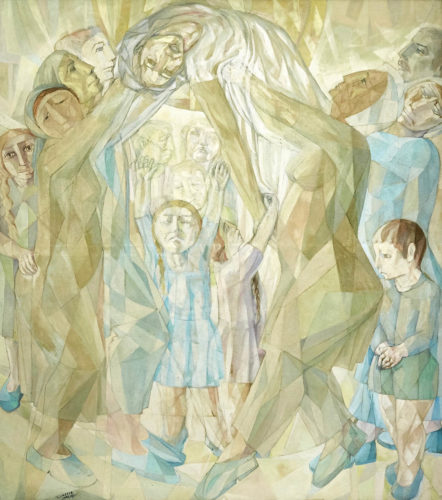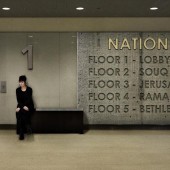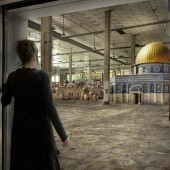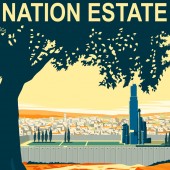
Challenging a narrative often implied as an exclusively masculine performance of national sacrifice, Leila Nseir’s The Marytr (The Nation) depicts the martyrdom of a woman, and displays the mourning of her death. Pushing back against the distinctly male image of the fedayi freedom fighter that has typically dominated the iconography of liberationist struggle in the Arab world, the subject is held up by her grieving female companions, as crying children reach up to touch her. Likely a product of Nseir’s visit to south Lebanon 1976, the work places a somber spotlight on the female plight in war.
تصوّر لوحة ليلى نصير “الشهيدة (الأمّة)” تضحية امرأة والحداد على وفاتها متحدّيةً بذلك الصورة النمطية للتضحية الوطنية المحصورة بالرجال. ويظهر الموضوع من خلال حزن شريكاتها فيما يرنو الأطفال الباكون نحوها محاولين لمسها، وتحاول ناصر بذلك مجابهة صورة الفدائي الذكر النمطية التي هيمنت على رمزيّة الصراع لأجل الحريّة في العالم العربي. ويسلّط العمل ضوءاً قاتماً على معاناة النساء في الحرب، وقد يُعزى ذلك لزيارة الفنانة إلى جنوب لبنان عام 1976.







